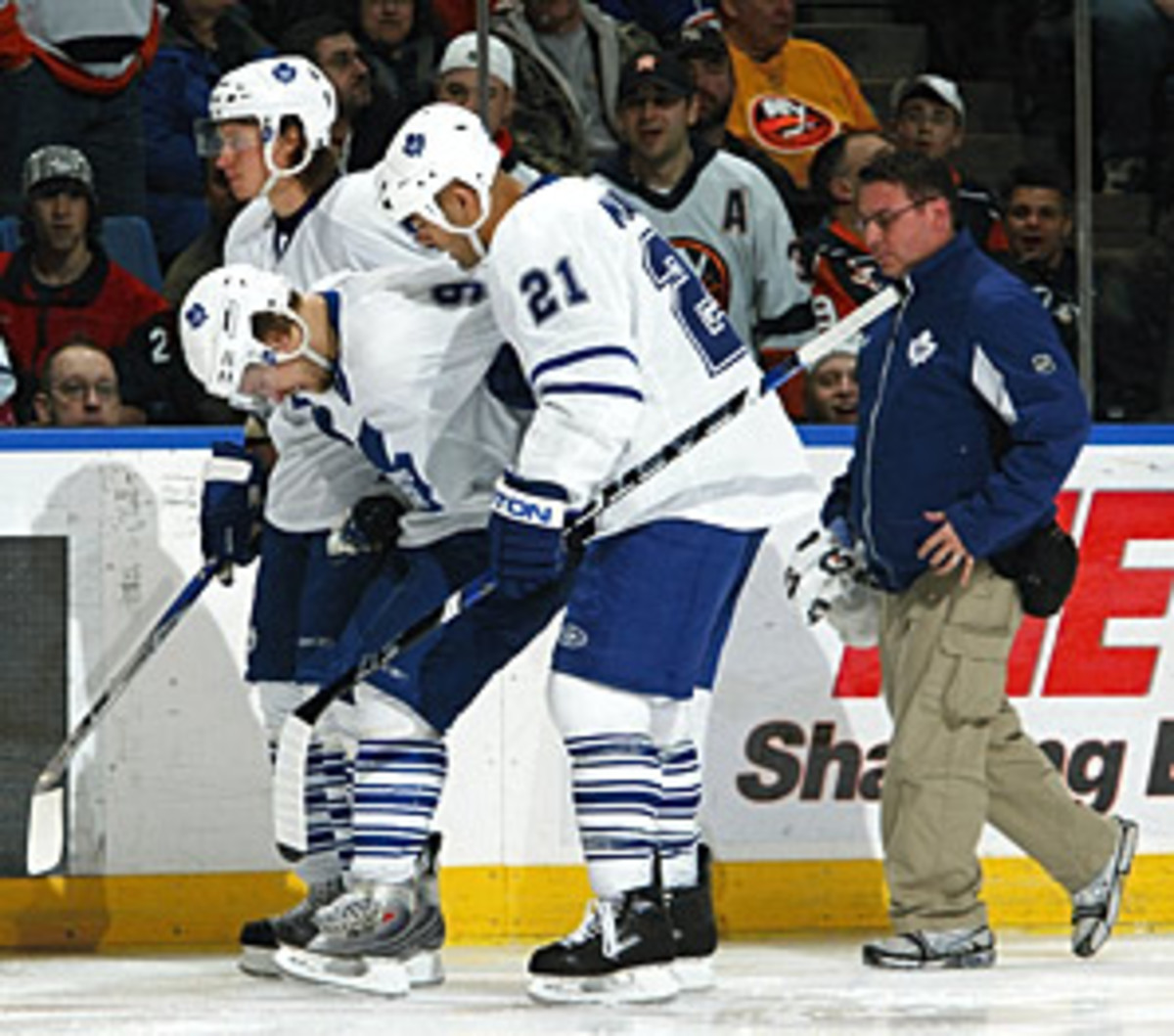NHL players union wants shots to head banned
NHL Players' Association chief Paul Kelly urged the league's general managers on Monday to adopt a ban against intentional hits to the head.
Kelly proposed a rule that would give referees the ability to immediately punish players who deliberately target the heads of opponents. Now, those hits are mostly handled with supplemental discipline by the league.
"That's probably the most significant concern on the part of players," Kelly said. "I would say better than three-quarters believe that we need to have a new rule on hits to the head, that protects players."
While Kelly's proposed rule wouldn't directly address fighting, the role of fisticuffs and the danger it poses to players is expected to be the central issue during the three-day meeting for the 30 general managers.
The union doesn't support the elimination of fighting.
"The players' view is that fighting does play a large role in the sport," Kelly said. "It cuts down on violence ... as far as using the stick. It protects the star players, the smaller players."
The debate over fighting's place in hockey surged to the forefront again after 21-year-old player Don Sanderson died in January from injuries sustained in a fight during a Canadian amateur league game on Dec. 12.
Sanderson's helmet came off during the fight, and he struck his head on the ice.
"When you have a tragedy of this scope ... you have to look at the mechanics of fighting, and you have to try and make it safer," said Toronto Maple Leafs GM Brian Burke, who put together the 2007 Stanley Cup champion and frequent fighting Anaheim Ducks. "I don't know one person who wants to expand the role of fighting."
General managers seem to be agree with the players' association that fighting should stay in the game, but both groups are open to rule changes that could make it safer. One could be a requirement that players keep helmets on for the duration of bouts. That could create more hand injuries -- resulting from punches -- if helmets stay on during fights.
"(Fighting) is a part of the fabric, the culture of the game," said Phoenix Coyotes GM Don Maloney, who played 14 years in the NHL.
While the NHLPA contends that fighting is necessary to deter stick violence, such as slashing and spearing, Kelly wants a specific rule to discourage open-ice shoulder and elbow hits to the head.
Kelly proposed a ban similar to the NHL's current rule on hits from behind. While penalties such as interference and boarding can also address these type of hits, the NHLPA proposal specifically targets shoulder shots to the head, while taking intent into account.
"We're talking about the unsuspecting player -- the guy who is in a vulnerable position -- who gets hit from a player who either intentionally or recklessly targets the head of the player," Kelly said. "Whether he strikes him with his shoulder or some other body part, it's the view of the players that those types of hits needs to be eliminated from the game.
"It's a pure safety issue."
Ottawa Senators general manager Bryan Murray, whose small group addressed fighting and the NHLPA rule on Monday, said general managers are split about rule changes regarding fighting and hits to the head.
Some, such as Maloney, believe Kelly's proposed rule is too specific and has already been addressed with other penalties. Murray, however, thinks intentional shoulder hits to the head need to be addressed.
There is also a split among the GMs about how to make fighting safer. The junior Ontario Hockey League adopted the helmet-on rule in January.
"(Fighting) is the topic that will take the most amount of time (this week)," NHL disciplinarian Colin Campbell said. "We're at a point now where there's certain aspects of fighting we have to address.
"I'm not confident we'll have a list of recommendations by (the end of the meetings), but I'm confident we'll have a good set of recommendations going into next season."
General managers can only recommend rule changes to the league's board of governors, who then vote to enact them into law.
A separate but related issue discussed among the general managers and the NHLPA was equipment.
Kelly said the union is looking toward improved helmet technology and a required soft cap on all shoulder pads. The hard cap on the shoulder pad poses a greater injury risk in a hit to the head.

































